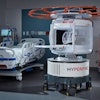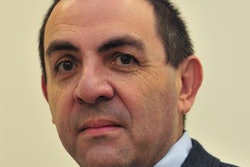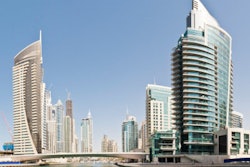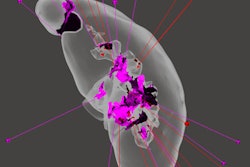
A new synchrotron in the Middle East is on the verge of circulating its first subatomic particles, underlining the rapid pace of scientific advancement in the region, but a lack of funds may prevent the project from reaching its full capacity.
Based near Amman in Jordan, Synchrotron-light for Experimental Science and Applications in the Middle East (SESAME) is the first major international research center in the region and is due to go before the end of this year, according to Roy Beck, PhD, professor of biophysics at the Center for Nanoscience and Nanotechnology and the Sagol School of Neuroscience at Tel-Aviv University, as well as a member of the SESAME user group.


SESAME will be a hub where researchers can learn and exchange ideas without politics, language, and religion getting in the way. All images courtesy of Roy Beck.
The machine that will generate beams of intense radiation by accelerating electrons around its 133-meter ring will be ready for science experiments from May 2017, becoming the latest facility to join the ranks of 60-plus synchrotrons in existence worldwide. The user group comprising delegates from each partner country met during November and is due to have ongoing discussions at the facility to discuss the progress of the project, and no doubt the financial uncertainty that hampers its development.
SESAME, which cost $110 million U.S. (104.9 million euros) to build, is a collaboration among Bahrain, Cyprus, Egypt, Iran, Israel, Jordan, Pakistan, the Palestinian Authority, and Turkey. Its governing council is headed by Chris Llewellyn Smith, PhD, former director of the European Organization for Nuclear Research (CERN), which operates the Large Hadron Collider in Geneva.
Created through the United Nations Educational, Scientific, and Cultural Organization (UNESCO), it has received funding from the European Union and other countries, as well as benefited from the donation of land and machine elements. However, so far funding has only stretched to four beamlines (stations), and not the 24 as originally anticipated. The Soleil Synchrotron facility in Paris, by comparison, has 40 such beamlines.
"The fewer the beamlines, the lower the machine's capacity for experimentation. Each beamline costs between $1 million to $4 million, with 10% needed for maintenance each year," Beck noted. He explained that much more than a 10% investment is needed every year to make necessary upgrades to keep a synchrotron top of the line.
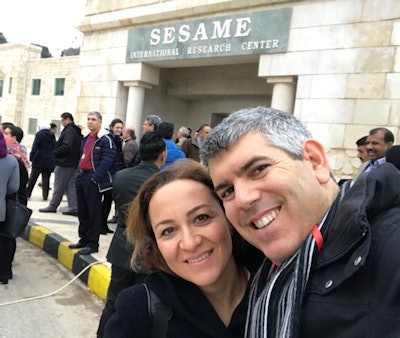 Roy Beck shown outside the SESAME facility with fellow user-group member and solid-state physicist Özgül Kurtuluş from Turkey, who starts work as a research scientist at the University of Siegen in Germany in January 2017.
Roy Beck shown outside the SESAME facility with fellow user-group member and solid-state physicist Özgül Kurtuluş from Turkey, who starts work as a research scientist at the University of Siegen in Germany in January 2017."Each partner has committed to an investment of several million dollars a year, but far more money is needed to build this machine up. Several tens of millions of dollars more would allow the facility to operate as it should," he said, explaining that the project still lacked $32,000 U.S. (30,500 euros) for building an onsite cafeteria. "To have just a few stations means the facility will not achieve its true potential. It's like having a Ferrari but driving it at 20 miles an hour."
He pointed to big contributions from Germany, UNESCO, and Jordan but believes other contributions and donations fall short of what is required or promised.
"President Obama said it was time to invest in the Arab world and, while there is U.S. consultancy involvement, there has been no provision of funds, because Iran is one of the partners. If the U.S. wants to promote cooperation in this region, then this is such an opportunity. Similarly, Saudi Arabia and other Gulf countries have not contributed because of Israel's involvement," Beck said.
Nevertheless, the facility has the potential to be of huge benefit, not just to science but to international relations, he continued, pointing to the areas of research that would benefit: biology, physics, chemistry, material sciences, archeology, and solar sciences, to name but a few.
So far, scientists from the Middle East have had to travel to other regions of the world to conduct experiments in such facilities, notably to Europe and the U.S., according to Beck.
"The facilities in Europe are overbooked, so the chance of getting a slot for one's particular experiment is limited," he explained. "Not only will SESAME make access to a synchrotron machine easier -- many researchers will now be able to drive a comparatively short distance, rather than fly -- it will also increase the number of experiments taking place and cut down risk of damage to artifacts and other samples during transit."
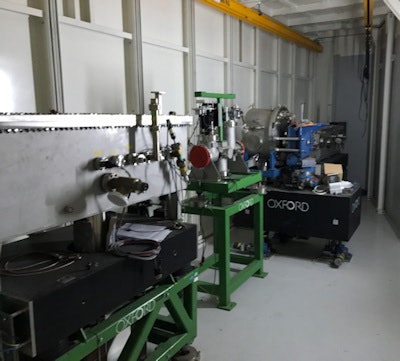 Inside the facility, each beamline costs between $1 million and $4 million.
Inside the facility, each beamline costs between $1 million and $4 million.More importantly, this will be a place where scientists and researchers from all countries can sit down, talk, exchange, and learn without politics, language, or religion getting in the way, he noted. "For us, science is the most important aspect, and only good things can come of this collaboration. SESAME is a beacon for the Middle East," Beck said.
The machine will generate light in a range of wavelengths and then channel it into intense beamlines for specific experiments to reveal the structure of biological samples, historical artifacts, and materials at the atomic scale. The four initial beamlines (x-ray absorption/fluorescent, powder diffraction, infrared, and protein crystallography) in SESAME will be used for research experiments in biology, medicine, and material sciences.



